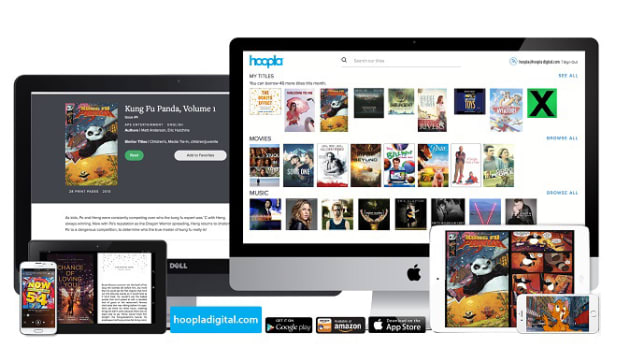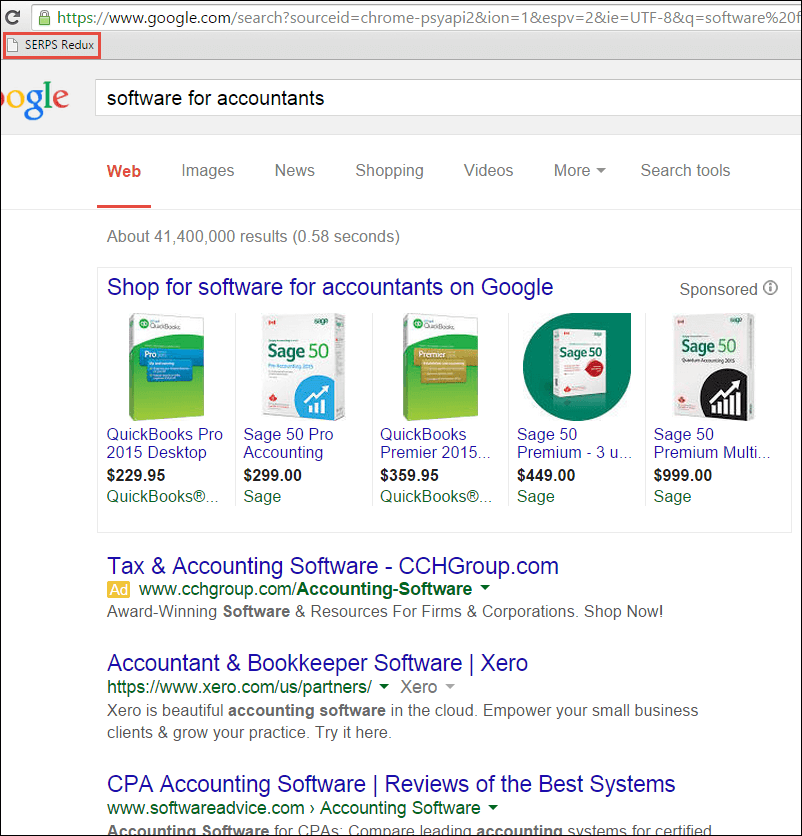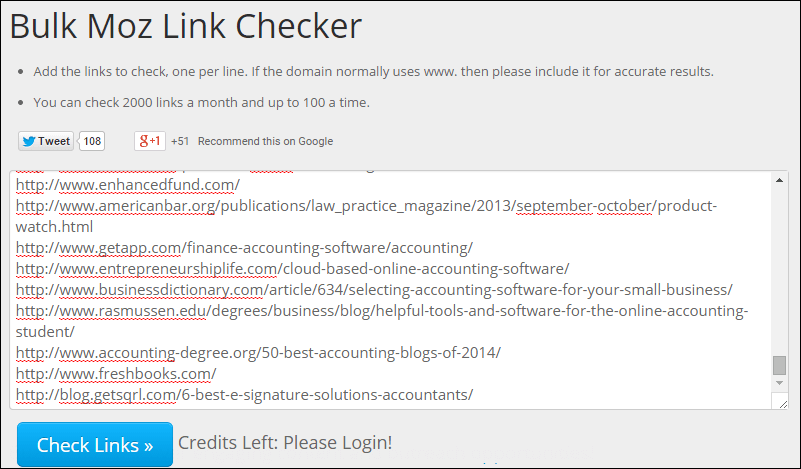How To Marry Keywords & Compelling Content: In-Depth & Step By Step

The death of keywords has been a bit exaggerated. Despite Google’s efforts to move towards entity search (“
things, not strings“), understanding the words that people use to search for things is likely to continue to be valuable for online businesses.
That said, it is true that some of the “old ways” of keywords optimization simply don’t work as well as they once did.
As Google has been inundating webmasters with
pandas,
penguins, and
other species over the last few years, I’ve seen business owners and marketing departments alike become increasingly confused about how to actually target a specific keyword that they want to rank for.
So, how should you be thinking about keywords in this “create great content” era of
search engine optimization (SEO) and online marketing?
In this post, I’ll walk through how to incorporate keyword research and keyword targeting into high-quality content, thereby positioning it to help
drive leads, links, shares and sales.
Self-Inventory: Where Does Your Site Stand?
- Gather
- Prioritize
- Act
For the purposes of this article, I’m going to assume you have a list of terms you want to target, have a sense of how you want to prioritize them, and are ready to “act” and start integrating them into content.
Note: If you’re looking for a more comprehensive guide to the first two steps, Nick Eubanks’ paid course is a great walkthrough of thorough keyword research and evaluation, and both SEO Moz and Brian Dean from BackLinko have created excellent free guides to getting started. Once you’re ready to “act” and start mapping keywords to actual content, there are five key questions to take into account:
1. How Authoritative Is Your Domain In Relation To Your Niche?
This is going to have a major impact on what kind of terms you can target with what kinds of content (and should impact
your overall SEO strategy in general), because an authoritative domain can target more competitive terms with less promotional effort behind a specific piece of content. Conversely, a less authoritative domain will likely need meatier content with more promotion effort behind it to rank for the same terms.
How can you get a sense of how authoritative your domain is? A quick and dirty way to do this is to look at your domain authority in relation to competitors in
Open Site Explorer or
Ahrefs.
Let’s imagine I’m looking to apply the keyword research I’ve gathered to help drive traffic to my (fictitious) accounting software company, which sells a B2B product designed for accountants.
To understand the competitive landscape here, I want to look at two types of competitors:
- Business Competitors. These are the folks I would rattle off if you asked me, “Who are your biggest competitors?” An important note here, though, is that these businesses may not be my actual competitors for keyword rankings. My business competitors may be doing a terrible job of getting links and marketing themselves online in general (even if they’re successful companies). It’s possible that the sites ranking for my target keywords are publishing sites (large news publications, affiliate sites, individual blogs, etc.) that don’t actually sell anything that competes with my products or services.
- Search Engine Results Page (SERP) Competitors. For this reason, you need to actually gather a list of the folks showing up in the search results for your target keywords. You can do this by noting the URLs that appear in the result pages when searching for a few of your most important terms (this handy bookmarklet is great for helping with that process). You could also use a tool like SEMrush to see your top organic competitors (folks consistently ranking for your target terms).
Here is the search results page for [software for accountants]:
When I click the SERPs Redux bookmarklet, I can quickly grab the “plain listings.”
Now I can take that list of URLs and expand it a bit by running the top few competitors through SEMrush to see the top organic competitors. This will help show if there’s anything I missed.
Focus on the top 5-10 results for each term, and limit the number of organic competitors you’re adding to your list to a handful. You’re not worried about how you compare to sites that are ranking 30th for your target terms. You want to know how you stack up to the sites that are where you want to be — on the first page.
Once I have the list, I can quickly drop it into a tool called
Moz Check to get Moz metrics (which is free up to 2,000 links at the time of writing):
Or, use Ahrefs’ “Batch Analysis” tool:
Now I can compare the top domains in these SERPs to my own. Are the authority scores similar? Do I have a markedly better domain authority? Am I lagging way behind? This will all be important when I go to actually determine which type of content I can (or need to) create to target each keyword.
If you want to dig further into the topic of competitive analysis, there are some great resources on the topic, such as:
2. What Is The Traffic & Business Opportunity For Individual Keywords?
Obviously, a fundamental aspect of keyword research is understanding the search volume and potential value to your business of each keyword. You can further extrapolate the value of a keyword by:
- Looking at the search volume for your keyword(s) using Google’s Keyword Planner.
- Applying estimated CTR data to that search volume to get a rough sense of what different rankings are likely to drive in terms of traffic.
- Applying your standard conversion rate or the value of a standard visit (assuming you have that data) to get a (very rough) sense of the likely hard dollar value to your business of ranking for a specific keyword.
3. How Competitive Are Individual Keywords?
Understanding how competitive your niche is and how authoritative your domain is in relation to that niche is a great first step. You also need to understand, more granularly, how competitive the individual keywords (and groups of related keywords) you want to rank for are.
This is a bit trickier than getting a rough sense of relative authority, but there are a number of processes and tools that can help you get a sense of individual keyword difficulty and competitiveness. In terms of a guide, a couple useful resources include:
There are also a variety of different tools (most of them paid) that can help with this research:
Once you understand how authoritative and well-aligned with your keywords competitive pages are (again, focusing on the top 5-10 that are actually positioned where you want to be), you can better understand what you’ll need to do to rank.
4. What’s The Intent Behind The Keyword You’re Targeting?
User intent is important in keyword research. It’s also very important in keyword targeting and mapping; you need to understand what your searchers are really asking with their queries in order to effectively target those queries with the right content.
Identify keywords that are
informational (and the type of information and experience that user is likely to be looking for),
navigational (and what those searchers are trying to navigate towards), and
commercial (and what those folks are looking to buy). If you’re looking for a more fleshed out process, you can even go so far as to
create your own “keyword matrix.”5. What’s Your Own Internal Capability?
Equally important to understanding what type of content you need to create to target a specific keyword is figuring out what you can actually do as a company. Key things to determine here will be:
- Do you have content resources? Do they have experience writing things that get shared and linked to?
- Do you have outreach resources who can promote content you’re creating?
- Do you have “built-in distribution”? (In other words, every time you publish a new post, it gets hundreds of shares from your community and is frequently talked about and linked to from thought leaders.)
- If you don’t have these resources internally, do you have budget to hire for them?
Once you’ve done a bit of self-assessment about the authority of your domain, the competitiveness of individual keywords you’ll want to target, what searchers are actually looking for and expecting, and what your internal resources look like, you can actually get started on mapping keywords to different types of content assets.
The Right Content For The Right Job (And Keyword)
Now that I’ve done the legwork to understand where my domain is at and what my strengths and weaknesses are, I can start to map my keyword targets to specific content. Let’s go back to my hypothetical accounting software example and start to actually determine what types of assets I want to use for what types of keywords.
Let’s assume the following is the output from my keyword research process. (This would be a pretty poor output from a thorough process — but again, for a more in-depth keyword research process, see the earlier mentioned articles on keyword research in general.)
First off, I’m going to be able to knock out a lot of these terms just based on intent; most of these search queries are likely people looking for personal or small business accounting software (I’m selling directly to accountants). Let’s get a better list:
This still isn’t what I’d expect in terms of output from a thorough keyword research process, but the intent is certainly a lot better aligned with what I’m selling here, so we’ll work off of this for the purposes of thinking about how to map content ideas to specific types of keywords.
Now that I have a list better suited to likely prospects, we can finally get down to mapping keyword ideas to specific content types.
Shorter, Less Shared Pages
Like a lot of content marketers and post-Panda SEOs, I love long posts with a lot of unique content (you’re reading one right now), but there are still many instances where short content actually works.
If you have a strong domain and a keyword with low competition, you might not need to create an opus on a specific topic in order to rank for it. If you are also resource constrained and the term has relatively low business value, shorter content starts to become a much more viable option for ranking here. You’re able to create that content more cheaply (so you need less traffic, leads, and sales to justify the asset), and it doesn’t require as much of an internal commitment (or financial commitment, if outsourcing) to create.
Here are some good, specific examples of shorter, less shared content types that might rank for lower competition terms:
- Glossary Style Pages. These can map well to specific informational topics where a searcher would be more likely to look for a definition and background on a specific topic than a sales page. For our software for accountants example, these pages would be great for targeting very specific new regulations or issues small business accountants could be dealing with where the search volume is relatively low. Loz James has a great walk-through on how to create high quality glossary pages over on Content Champion.
- Product or Features Pages. Depending on the niche, your domain strength, and the types of queries you’re targeting, it might be very difficult to have your actual product, feature and sales pages rank for the most competitive terms (tough medicine to swallow for many businesses and marketers, I know). That said, your product or feature pages can be a great place to target very specific, lower competition terms. In our example, a general product page may not rank for “accounting software” or even “software for accountants” if we have a brand new site. However, we might be able to write up a great, in-depth page walking through our specific features around 1099 solutions, enabling us to target “1099 software for accountants” and any relevant variations.
- News Oriented Posts. Glossary style pages are useful for targeting more “evergreen” informational topics, but for trending news topics you can potentially get valuable search traffic by creating a brief description of the topic, linking to any great analysis of that topic, and adding some (very brief) commentary from someone inside your company. If the news item is a recurring theme within your niche, you could even create a system for periodically refreshing a canonical asset on that topic.
Long Informational Content, Mid-Level Competition
There are a ton of topics you’ll find in most niches where some sort ofinformational approach would be best, where competition exists but isn’t overwhelming, and where the traffic you’ll get will be valuable. You’ll need to get some shares and links but won’t need inbound links from hundreds of unique domains to have an asset rank.
For these topics, a few types of assets tend to work particularly well:
- Expert Roundups. For our accounting software example, to target a term like “payroll software,” we could ask several accountants and accounting experts to offer their take on a question like “What’s your number one frustration with payroll software?” This would allow us to target that term and create a great asset while also making it likely that all of the experts who participated in our roundup will help promote it. If you’re looking for more information about conducting expert roundups Richard Mariott, Brian Dean, Julie Joyce and Brian Lang have all created great resources on the topic.
- “Best Resources” or “Best Blogs” Lists. When I have a broad industry term that I want to target, adding “blogs” or “resources” to that term can be a great way to rank for the modified version of the core term, other specific variations, and {term} + blogs. For example, with my accounting software company, an article like “Best Tax Prep Resources for Accountants” gives me an opportunity to target some lower competition variations of “tax preparation for accountants” that might be difficult to get traction for with a simple product or features page that’s not likely to be shared.
- Best Tools Lists. Similarly, identifying tangential topics that are interesting to my audience (but likely not competitive) can lead to more ranking opportunities. In this case, I could create a great list of tools that would be of interest to my prospects, helping me drive traffic and links while targeting a specific keyword I wanted to target. For instance if my software were specifically focused on tax preparation for accountants and didn’t offer any payroll functionality, listing (and comparing and contrasting) the top payroll management tools and software could be a great way to target those keywords (which my prospects are likely interested in) without having to list off all of my competitors.
Compiling these types of assets (in a thorough, high quality way) is extremely time consuming, but by virtue of the fact that they’re featuring experts, tools, and other great resources, it’s likely they’ll obtain somedistribution through social media and at least a link (or a few). For valuable mid-competition terms, this is frequently more than enough to rank, and your content will be very well aligned with the searcher’s intent (netting you high click-through rates and even more traffic).
Long Informational Content, High Competition
For more competitive terms in niches where you’re at a disadvantage (or just average) in terms of domain authority, you’ll likely need to create something that’s highly “linkable.” This is where capacity (internal strengths/resources and available funds) comes into play, as these kinds of assets commonly:
- Are very expensive to create or have created.
- Require a lot of understanding of your niche and/or what linkers are likely to link to.
- Are broader in theme (both to address potential linking audiences, and also to target more competitive keywords).
- Fail to “go viral” or otherwise achieve the visibility you were seeking.
That last bullet is an important one. As much as you might work to
fail proof your content ideas, often times when you create a large, expensive content marketing asset,
it will fail — if not entirely, then at the very least it may fail to get the kind of traction necessary to rank for the terms you want to rank for.
This type of content could include things like:
- An industry survey or in-depth study (i.e. creating your own, not just reprinting findings from someone else).
- An incredibly comprehensive guide on a specific topic; the topic needs to be something that people are likely to link to (think something like this or this in terms of length and quality).
- Interactive graphics (with an accompanying post and lots of interesting, unique data).
Furthermore, each piece of content in this vein needs to be accompanied by
great outreach.
With these kinds of assets, I might go back to my accounting software keyword list and try to target something much more broad and competitive; but, if I didn’t have the budget and resources to create multiple assets here, I might be better off targeting mid- to lower-level competition terms with different types of content assets.
Giving Yourself Multiple Swings At The Plate
That last point is an important one in general as you’re attempting to target your core keywords with compelling content.
Some of your swings will miss.
If you have a bucket of keywords you’re targeting:
- Map smaller, less resource-intensive assets to less competitive terms.
- Map mid to high competition terms to assets likely to attract those kinds of links.
- Come up with multiple ideas for assets that could work for each key term.
Learn from any assets that don’t work (some won’t), and make adjustments. Measure your success with content marketing in aggregate — you’re building a portfolio of content where some assets will be home runs and some will be busts. Don’t just roll out one piece of content designed to target a specific term and abandon the process if it doesn’t immediately rank for the term you wanted to target.
By mapping the right content to the right types of terms, you’ll not only put yourself in a great position to rank for your target terms, you’ll also make sure you’re doing it in the most efficient way possible, which will help you to maximize your ROI from the content you’re creating and promoting.
























































